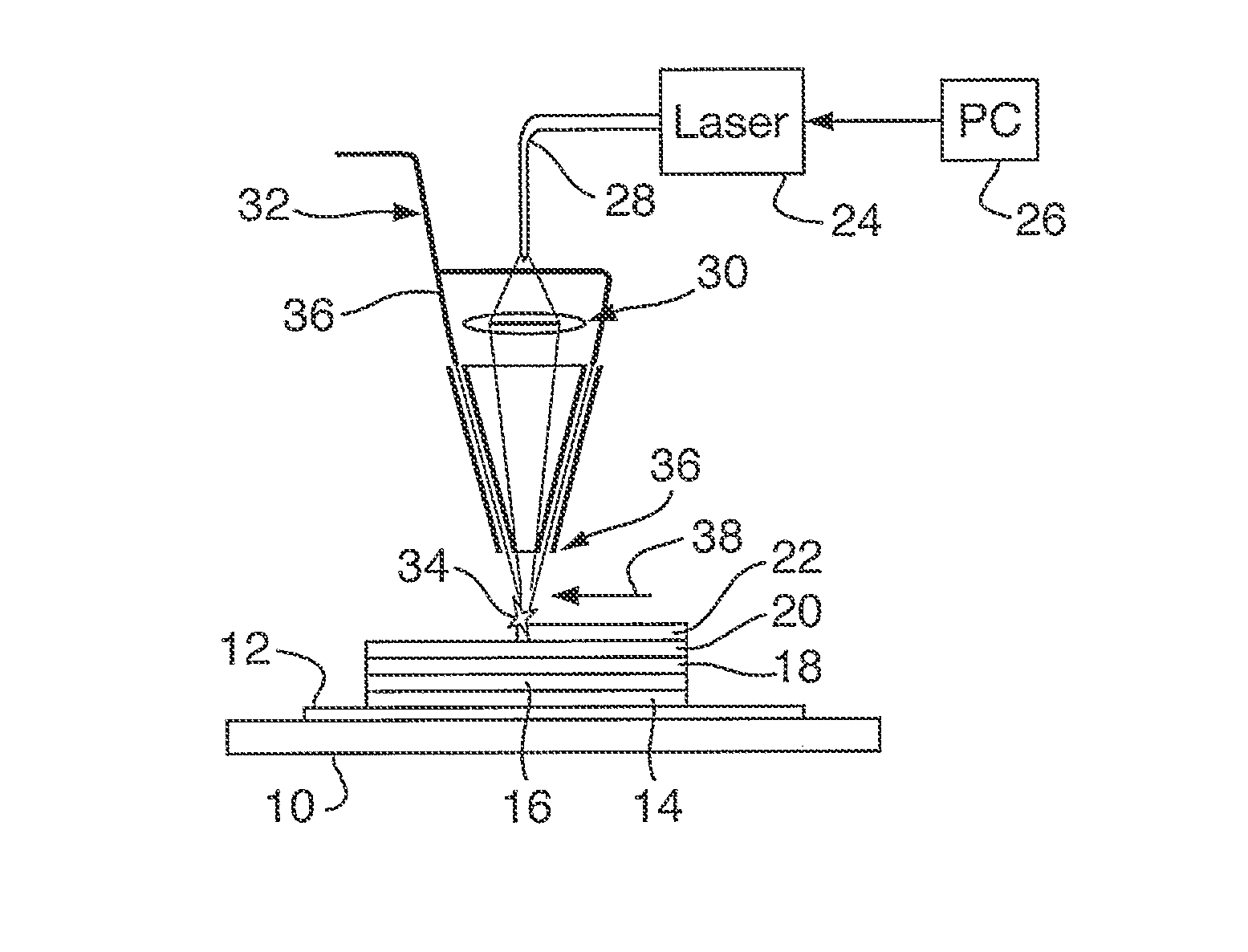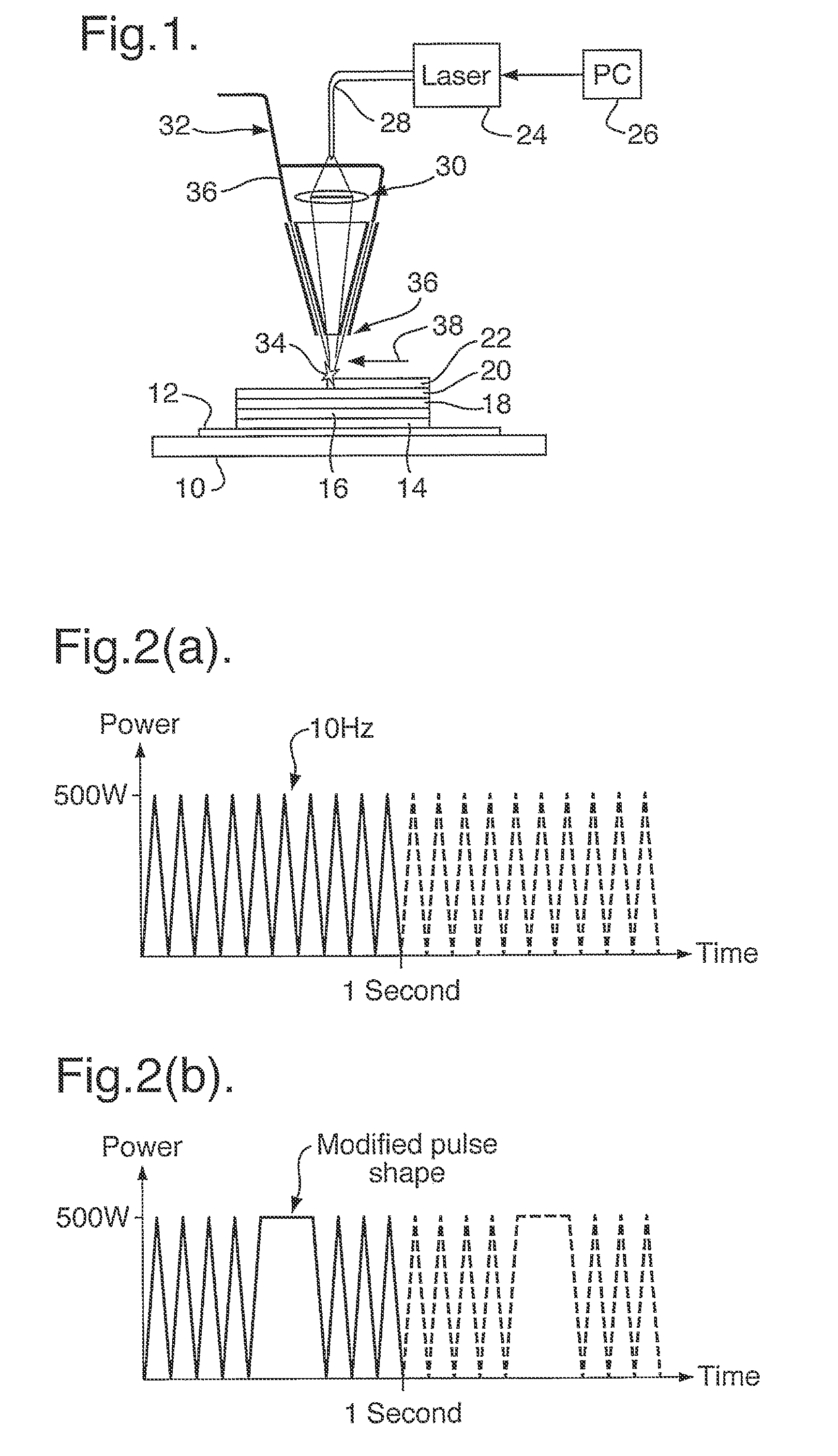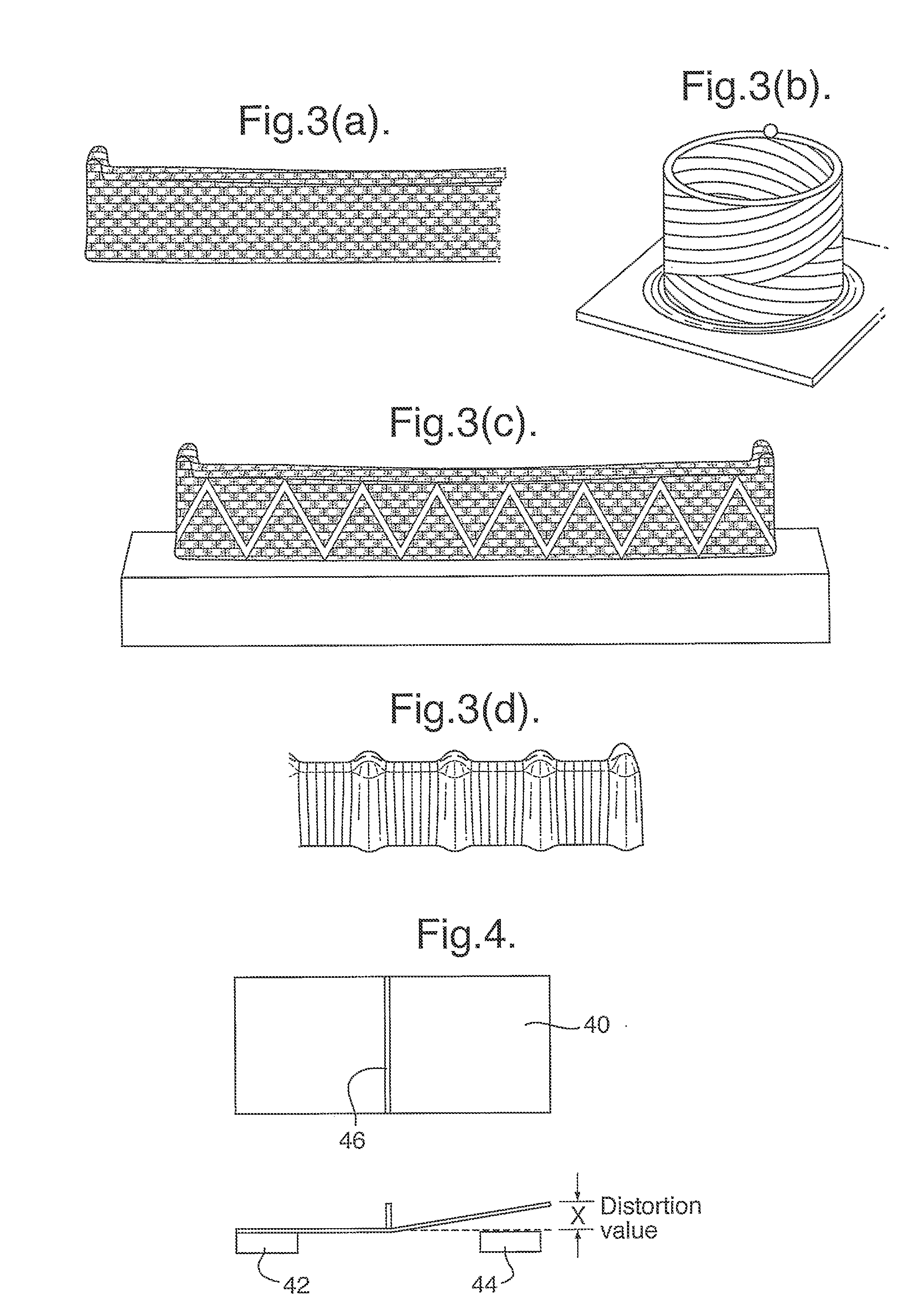Additive layer fabrication method
a technology of additive layer and fabrication method, which is applied in the direction of manufacturing tools, welding/cutting media/materials, manufacturing tools, etc., can solve the problem that the method does not lend itself to the production of near-network-shape components to close tolerances, and achieve the effects of reducing distortion, reducing distortion in the substrate, and reducing distortion
- Summary
- Abstract
- Description
- Claims
- Application Information
AI Technical Summary
Benefits of technology
Problems solved by technology
Method used
Image
Examples
Embodiment Construction
[0019]The invention will now be described merely by way of example with reference to the accompanying drawings, wherein
[0020]FIG. 1 shows an apparatus for implementing the method of the invention,
[0021]FIG. 2 shows waveforms of a laser beam produced in the apparatus of FIG. 1;
[0022]FIG. 3 shows structures fabricated by means of the invention;
[0023]FIGS. 4 and 5 illustrate experiments performed to demonstrate an aspect of the invention, and
[0024]FIG. 6 shows test pieces fabricated in the experiments.
[0025]Referring to FIG. 1, an apparatus for selective laser melting comprises a base plate 10 configured to receive a workpiece comprising a parent plate or substrate 12 on to which successive layers of material 14, 16, 18, 20, 22 are built-up as described hereinafter. A laser generator 24 is controlled by a computer 26 to deliver a laser beam via an optical fibre 28 to conventional focussing optics 30, which focus the laser beam to a spot 34 on the surface of the work piece. A powder del...
PUM
| Property | Measurement | Unit |
|---|---|---|
| Diameter | aaaaa | aaaaa |
| Thickness | aaaaa | aaaaa |
| Power | aaaaa | aaaaa |
Abstract
Description
Claims
Application Information
 Login to View More
Login to View More - R&D
- Intellectual Property
- Life Sciences
- Materials
- Tech Scout
- Unparalleled Data Quality
- Higher Quality Content
- 60% Fewer Hallucinations
Browse by: Latest US Patents, China's latest patents, Technical Efficacy Thesaurus, Application Domain, Technology Topic, Popular Technical Reports.
© 2025 PatSnap. All rights reserved.Legal|Privacy policy|Modern Slavery Act Transparency Statement|Sitemap|About US| Contact US: help@patsnap.com



